








Ireland has committed to cutting greenhouse gas emissions in half by 2030 and to achieving net-zero emissions by 2050.

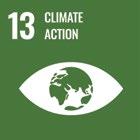

Driving Climate Action is a Strategic Priority for Fáilte Ireland, and we aim to help tourism businesses play their part in reducing greenhouse gas emissions.
Water Management is a key Climate Action, helping reduce greenhouse gas emissions and the carbon footprint of your business.
It’s also a savvy way to save money. The suggestions in this guide will lead to your business consuming less water resulting in a lower water bill.
Watch out for the money symbol on the right and remember the less water you use, the less money you pay.



Let’s get started.
This useful Carbon Calculator can help you establish the carbon footprint of your business. Find out about the Climate Toolkit 4 Business here
By introducing small changes to how your business consumes water, you’ll make noticeable savings and become more sustainable at the same time. Let’s talk about why water management is an important part of your Climate Action plan.

It requires considerable amounts of energy and chemicals to make water available for human use and consumption, so the less water used means less greenhouse gas emissions.
After all that energy is invested in our water supply, 25% of water is typically lost in leakage.In addition to energy savings, potable water is a natural resource that must be conserved for living organisms and functioning ecosystems.

Water Management is one element of your overall Climate Action Plan. Refer to our ‘Climate Action Roadmap’ for key steps to kickstart your climate action journey.
1 Demonstrate commitment of owners and senior management.
2 Set up a Green Team and appoint a Green Champion. 3 Raise staff awareness and engagement. 4 Gather and review data. 5 Identify and prioritise improvement targets and actions for your business.
6 Prepare and implement an Improvement Action Plan. 7 Review progress and report.
1 It reduces costs in your business you pay for each cubic litre of water used in your business and reducing water consumption reduces direct costs. In line with the Commission for Regulation of Utilities' (CRU) decision on non-domestic tariffs, a standard commercial rate for water was introduced in 2021 and 1m3 (or 1,000 litres) now costs a standard €2.50. This rate is due to increase in coming years.
2 It makes your business more resilient climate change is likely to result in more frequent droughts in Ireland with frequent water shortages.
Prepare for this by minimising consumption, eliminating leaks, and using alternative sources of water (such as groundwater and rainwater).
3 It may boost your business reputation committing to water management demonstrates that your business is playing its part to tackle climate change.
Scope 1: Greenhouse gas emissions your business produces directly for example, through burning fossil fuels such as gas and or oil to run your heating system.
Scope 2: Greenhouse gas emissions your business produces indirectly for example, when you import electricity produced by power stations burning fossil fuel.
Scope 3: All the emissions not directly owned/controlled by your business, but that you are indirectly responsible for through your supply chain, for example through the products you buy from suppliers such as food.
This guide includes actions relating to Scope 3
This may boost your business brand and reputation, which may enhance your recruitment, marketing, and sales.
4 Your clients, customers and staff expect it customers, clients, and employees are increasingly motivated to be more sustainable. Taking positive action to conserve water will make your business more favourable in their eyes.


Your ability to conserve water and monitor progress depends on how well you track your consumption.

Find out where you are right now, before you take any further action.
In this step, there are three recommended actions:
Log how much water is used and how much it costs
Calculate your water benchmark
Commit to regular monitoring
Create a simple spreadsheet to log the volume of water and cost of water per quarter, updating it each time your bill arrives. Do this for previous years too so you can create a visual graph of your water usage over time.
There are two main sources of information that will help you with logging consumption and costs, i.e. your quarterly Irish Water bill and your water meter. By reducing hot water wastage, you save water, energy, and the costs associated with heating.
Your Irish Water bill gives you information on the total volume of water used for the billing period as well as the total cost. Irish Water issues bills on a quarterly basis and aims to read meters every three months.
It’s important to get familiar with the terminology, remember to read the back page as well as the front! For your bill to be useful in understanding your water consumption, it must be a metered bill and be based on actual meter readings, not estimates.
While your Irish Water bill gives you topline information, your water meter gives more detailed insights.
How to get the most from your water meter:

Assign a member of your team to read your meter on a weekly basis.
Read the meter at the same time of day.
Log the weekly figure in a Water Meter Notebook at the same time of day each time.
To get your weekly cubic meter consumption, take this week’s reading and subtract the previous reading on the same day last week.
After a few weeks, you’ll see a pattern of the amount of water used to run your business. Monitoring consumption in this way allows you to spot trends, identify irregular usage and identify leaks.
Use the handy Water.ie calculator to calculate the costs of water consumption for your business.
To track your water consumption in more detail, consider installing sub-meters. Some businesses have pieces of equipment or areas in their business that have particularly high water usage e.g., swimming pools and kitchens so

investing in strategic submetering is an excellent idea.
This allows you to get information on high-usage areas and understand the usage within each specific area, which can help you sharpen priorities and schedule actions.
Install a data logger on your meter allowing you to monitor consumption remotely. Data loggers can be linked to a cloud-based system for easy access. You can even set up alarms to alert you to excessive or unusual water use.
The Riverbank Hotel in Wexford Town commissioned a leak detection survey to investigate possible water leaks on site. 4 leaks were identified and subsequently repaired. The survey and subsequent leak detection and repair saved the hotel €30,220 per year (50% of the annual water bill), reducing water consumption by 13,100m3 per year.
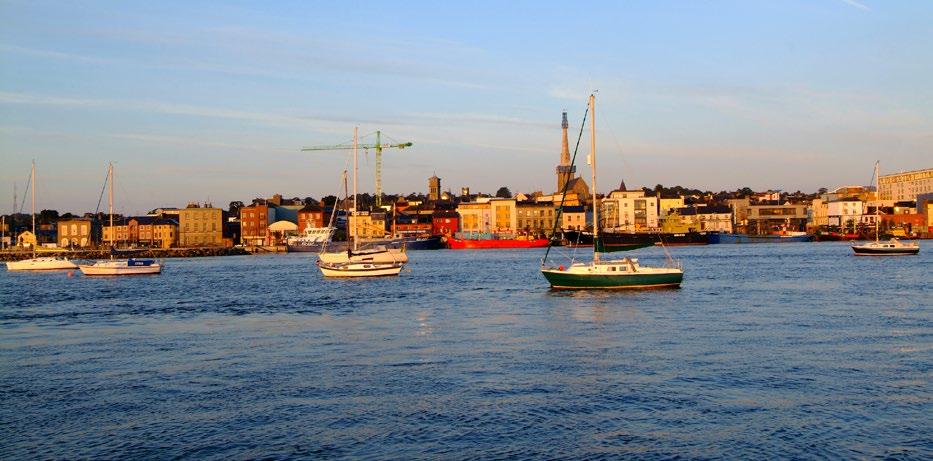
Every business is different in terms of water use. A hotel with a pool may use more water than one that doesn’t have a pool, for example. Equally, unusual events or seasons may cause your business to use
more water from time to time. Benchmarking is an excellent method to track water use over time, helping to compare the water consumption of your business with other similar businesses.

The amount of water that is consumed in your business right now is your first benchmark. Once you have established this, you can track your progress internally as you move forward.
Falls Hotel & Spa, a certified carbon neutral hotel in Co. Clare, reduced its water consumption per overnight sleeper from 118 litres per sleeper in 2019 to 75 litres per sleeper in 2020. It reduced its consumption per hotel guest (i.e., combining sleepers and day guests) from 25 litres per guest in 2019 to 18 litres per guest in 2020.

Measures implemented included:
monthly leak detection procedure
aerators in all bedroom taps and shower heads
sensor-operated showers and toilets in the leisure centre
push-taps in the public toilet areas of the hotel
sensor-operated urinals
The estimated payback time on purchase and installation of new fixtures was 12 months.
Commit to water monitoring
Your Irish Water bill arrives quarterly, but it’s not guaranteed that it is based on a recent meter reading.
It may be an estimate, so it’s recommended that you monitor your own business water meter at least monthly, and ideally weekly.

This allows you identify costly leaks quickly and it also gives insights into the impact of the Climate Actions you are taking and how usage changes across the seasons.
Once you have a good sense of how much water is consumed in your business, it’s time to get behind those figures and establish where the water is consumed. Here are a few ways to get started.
The easiest way to check for background water use (leaks) is to carry out a Night-Time Test.
Take a reading from your water meter last thing at night and ensure all water users including urinals are turned off.
Take another reading first thing the next morning, before staff or activity commences.
Depending on your business, there may be some water use at night but essentially it should drop to little or zero.
Always keep your Water Meter Notebook in the same place. Set up a tracking spreadsheet and update it monthly. Once you’ve set it up, it only takes a few minutes to keep updated.
If there is any significant difference between the two readings that cannot be explained, you probably have a leak!
Visually inspect taps, toilets, and showers to identify appliance leaks before benchmarking the main water users.
1 Count and log every waterusing fixture and appliance, inside and out. These might include toilets, urinals, taps and kitchen appliances.
2 Calculate water consumed by each of these users on a daily and or weekly basis.
3 Compare water consumption to best practice benchmarks.
Below is a sample Water Consumption Review table which you can create for your business.
Hot water is more energy intensive than cold water. It generates even more carbon emissions and costs your business even more money. For example, a 1,000 m3 cold water leak (less than 2 litres/minute) could cost an average of €2,280 whereas hot water could cost from €13,680 to €22,800 (Irish Water).

Bathroom
Showers 6-8 litres/minute No of showers x flow rate* (litres) x number of mins per week
Toilets
Kitchen
Here are practical tips on how to calculate consumption per water user.
Check cistern for a label that confirms capacity.
If there is no label, manually take water out of the cistern using a measuring jug and pour it into a bucket. Measure the total water in the bucket to confirm cistern capacity.
Estimate how many times the cistern is flushed per day for an estimate of daily water consumed per toilet
Check if urinals are managed or just flow all day. Water consumed by urinals can be estimated by multiplying the number of flushes per day by the cistern size.
Use 4-6 litres per flush based on a dual flush toilet as guidance. Control the flush frequency with motion sensors or push buttons.
Establish the water flow rate of taps and showers. The water flow rate is the speed at which water flows out of a tap, shower, or toilet in litres per minute.

Open the tap or shower at full force
Let it run for ten seconds into a large bucket
Measure how much water is in the bucket
Multiply by six to get litres used per minute

Check the datasheets provided with dishwashers and washing machines to establish the volume of water used per cycle. Measure or estimate the volume of water used outside - for watering plants, gardens, golf courses, washing yards or vehicles.
Note these separately as rainwater harvesting can be set up to address the water use in these areas.
Walk around your business and observe how you and your staff normally use water in day-to-day operations. Pay particular attention to cleaning and gardening practices.
Measure or estimate the volume of water used outside – for watering plants, gardens, golf courses, washing yards or vehicles. Note these separately as rainwater harvesting can be set up to address the water use in these areas.
Walk around your business and observe how you and your staff normally use water in day-to-day operations. Pay particular attention to cleaning and gardening practices.
Once you understand where and how water is consumed in your business, identify the priority areas for action. Your Green Team can put in place a standard review evaluate revise model for water and set team targets for reduction.
Repairing leaks is the number one priority for all businesses. After that, it will vary. In some businesses, the biggest opportunities for savings may relate to replacing a major piece of equipment while in others, it may relate to making minor appliance adaptations.
Measures that relate to raising staff and visitor awareness and changing behaviour are other common priority areas. Prioritize actions that lead to the greatest immediate cost and consumption savings.
The important thing is to set specific, measurable goals and to assign a person/team and deadline to each one. Here is a sample template for an Improvement Action Plan:
SAMPLE GOAL: Reduce water consumption by 10% in one year

Actions to achieve this goal:
No. Action Who will do it? By when? Resources Required
In some businesses, it falls to one or two people to act. Find a fellow businessperson, a friend, or a family member to help you brainstorm solutions and work out an Improvement Action Plan.

The success of your Water Management Plan depends on the people in your business. If you have been methodical about gathering data during the review stage, you will have great material to share with your team. Gather your team and make an event of sharing the data, inviting everyone in your business to brainstorm solutions for your biggest water management challenges.
CONSIDER YOUR VISION
Embedding sustainability into your culture stretches beyond encouraging employees to use less water or recycle more.
It’s about nurturing a long-term vision, mission and purpose that fosters a work environment where employees understand the impact of carbon emissions and are empowered to contribute towards change.

For more ideas to help engage your team and sustain momentum, check out the How To Tell Your Climate Action Story Guide.
Reducing water consumption and costs is accomplished through a range of strategies covering a number of areas across your business:
1 Repair leaks
2 Invest in fixtures and equipment
3 Influence behaviour
Leaks should be repaired immediately to avoid needless water waste. Not only is water wasted, but all the resources required to make the water suitable for human use are also wasted.
Leaks can lead to contamination of the water supply as where water gets out, dirt gets in. Leaks are costly you are responsible for all pipes on your premises, and you pay in accordance with volume of water used.
The night-time test is an easy way to check for leaks. They can be difficult to detect as much of the water supply system is hidden from view.
If you have identified or suspect possible leaks in your system, but can’t find them, the best option is to hire a leak detection company.
TOILETS
Reduce cistern size
URINALS
TAPS AND SHOWERS
DISHWASHERS
Water consumption can be reduced by improving the efficiency of your water users, and we have shared how to measure the water use of your main users with corresponding best practice benchmarks.
If the water use of any of your fixtures or appliances is much higher than the best practice standard, you can invest in adaptations or upgrades.
Install dual flush systems To reduce water used by large cisterns, place a water displacement device, such as a bag or bottle to reduce flush volume. (Make sure not to reduce the flow volume too much as this may not be sufficient to provide an adequate flush). Retro-fit old toilets with dual-flush cisterns
For automatic flush urinals, install shut off or solenoid valves or motion sensors to manage flush rates Alternatively, install waterless urinals (Typically, an unmanaged urinal uses 500m3/annum costing €1,250)
Retrofit existing taps with low flow aerators or replace existing taps with low flow aeration taps Install a flow regulator on lines to taps
Install self-closing or sensor operated taps to ensure taps are not left on unnecessarily Use mixer taps
Install flow reducers and aerators in shower fixtures, or low flow shower heads
In canteen/deli/kitchen areas install trigger-operated hoses
Plumb dishwashers and washing machines to a hot water source, as heating water with electricity is expensive. Contact your supplier in advance of this change to ensure it does not affect your warranty.
Use a pool cover when the pool is not in use. By slowing down the rate of evaporation, a pool cover keeps your pool naturally warmer, and your heater has less work to do.
Train staff to minimise consumption
Staff behaviour and habits can influence the volume of water consumed in your business. Here’s how to help your team achieve your water conservation goals.
Invest in communication, awareness training and monitoring
Ensure staff implement towel & linen re-use programmes
A dishwasher can use between 10 and 40 litres of water per cycle, whether the load is full or not.
Ensure only full loads are washed
Allocate responsibility for reporting leaks
Specify choice of wash cycle and temperature in dishwashers and washing machines
Use eco-friendly cleaning products that don’t require rinsing
Use a sink stopper when rinsing or washing
Minimise water used when cleaning
Use signage and checklists to encourage staff to better manage water use
Check sprinklers are not sprinkling on hard surfaces
Avoid tap-running in advance of or after cleaning
Water early in the morning and late in the evening to avoid evaporation
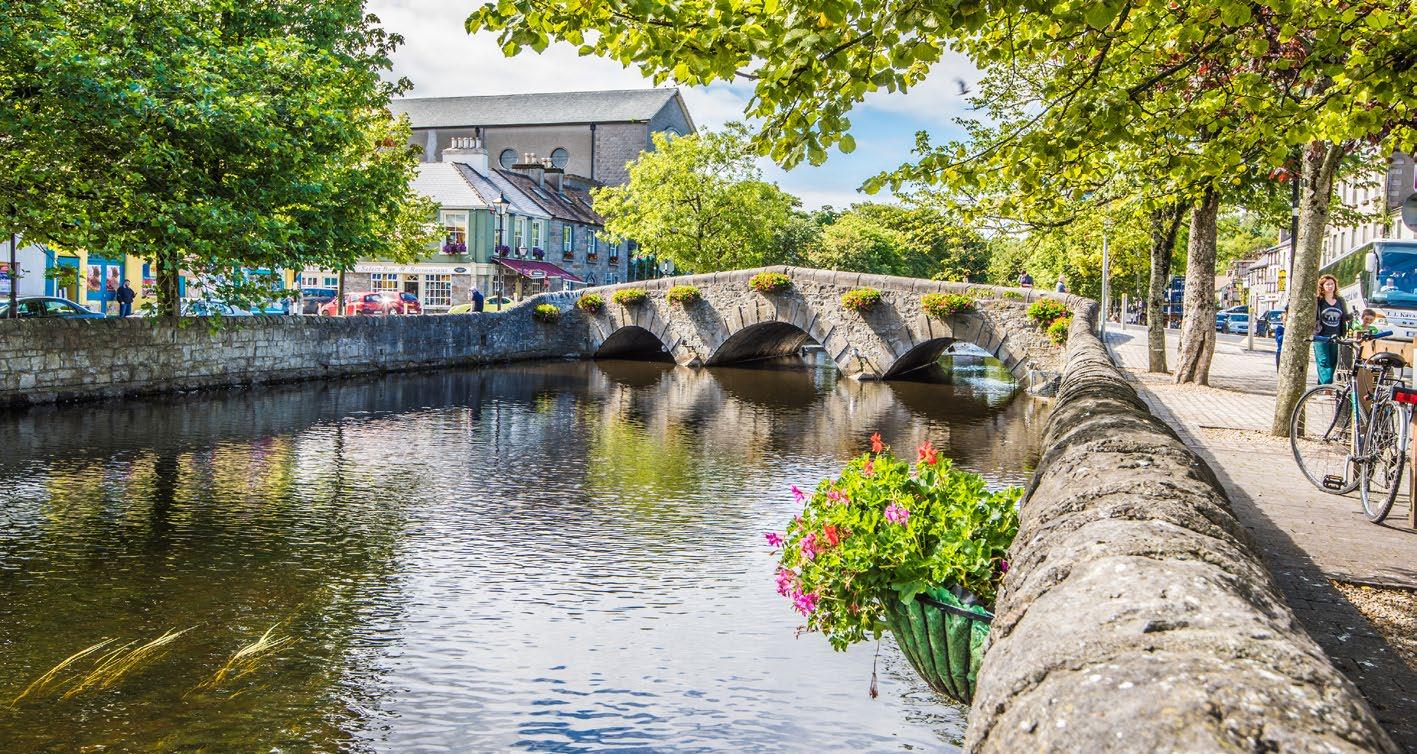
The hotel reduced its annual water consumption by 4,800 m3 per year (28%), reducing its water bill by €10,914 per year.
The hotel devised a plan to tackle all areas with mains water consumption, particularly bedrooms, public toilets, and the leisure centre.
All taps fitted were with aerators which reduced water flow from 8.5 litres per minute to 5.5 litres per minute.
Toilet cisterns were adjusted from a flush of 6.5 litres to 4 litres.
All taps in public toilets were replaced with automatic push taps.
Urinal flushes were adjusted from 1 every hour to 1 every 2.5 hours.
A carbon filter and flocculent dosing system was installed in the plant room for chemical dosing of the pool water, reducing the number of times required to back wash the pool.

Your clients, customers and community are aware of climate change and its impacts. Sharing your efforts to conserve water and reduce water consumption - through social media, local press, and your own website - is a smart way to engage with your stakeholder.
For more ideas to engage your team and sustain momentum, check out the How To Tell Your Climate Action Story Guide.
In many businesses, rainwater harvesting can significantly reduce mains-water use and is ideal for outside use, such as gardening, vehicle and bin washing and general cleaning.
Rainwater, although non-potable, can also be used for toilet flushing and in urinals though the feasibility of this would depend on how a business is plumbed. Of course, rainwater can be treated for potable use as well.
While installation of rainwater harvesting systems involves capital and installation costs, there are many benefits including:
savings of up to 85% of mains-water usage for commercial buildings improved sustainable water use added value to the property (may improve BER rating)
Rainwater harvesting systems work by channelling rainwater from roofs to a storage tank through gutters and pipes. Filters in the system prevent debris such as leaves from getting into the storage tank, which can be underground or overground. Water is then pumped to a ‘header tank’ for use in the system as needed.
The system is equipped with a switch, which reverts to mains water use in the event of a low supply of rainwater. The payback for replumbing existing buildings for rainwater harvesting can be 5 years or more.
Used water is known as grey water. It's made up of wastewater from sinks, shower drains or washing machines. Grey water can be collected and reused to water plants and wash external areas of the building.
The Maritime Hotel in Bantry installed a rainwater harvesting system at design stage. This system reduces the dependency on municipal water supply and currently 35% of water consumed on site is produced by the rainwater harvesting system. Rainwater is used in the toilets and swimming pool. These measures reduce the hotel’s water bill by circa €12,000 annum.

OPPORTUNITY
STEP 1 Understand water consumption and costs
Log and analyse how much water is consumed and how much it costs
Calculate your water consumption benchmark
STEP 2 Understand how your business consumes water
Check for mains and appliance leaks
Benchmark your main water users against best practice guidelines
Establish the water flow rates of your taps, toilets, and showers. Compare against best practice benchmarks
Establish the volume of water used per cycle by heavy-use appliances such as dishwashers and washing machines
Estimate volumes of water used for outdoor maintenance and cleaning of outdoor spaces and equipment
STEP 3 Review, evaluate and prioritise actions
Identify priority areas for attention and develop your Water Improvement Action Plan
STEP 4 Implement strategies to reduce water consumption
Reduce water consumption: toilets and urinals
Reduce water consumption: taps, showers, and appliances
COST
Low, Medium or High POTENTIAL FOR CARBON REDUCTIONS
Low, Medium or High
Low Cost Low
Low cost Low to Medium
Commit to regular monitoring Low Cost Low
Low Cost Low to Medium
Low cost Low to Medium
Low cost Low to Medium
Low cost Low to Medium
Low cost Low to Medium
Low cost Low to Medium
Low cost Medium
Medium cost Medium
Train staff on water conservation policies and practices Low cost Medium
Harvest rainwater and grey water
Medium cost Medium
Check out these supports and resources to help you on your Climate Action journey.
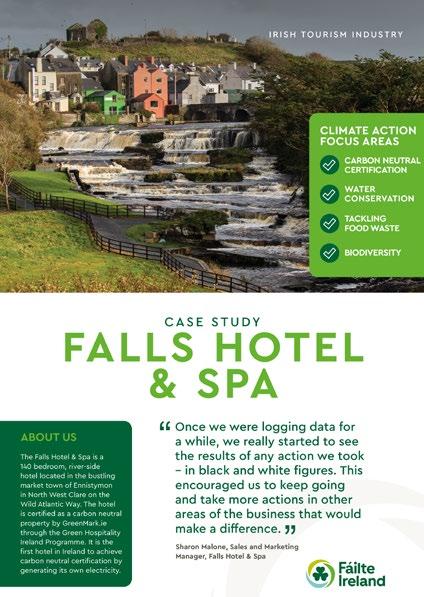

Find comprehensive Climate Action and business supports and resources for the Irish tourism industry.
Read More
Learn how your business can conserve water by safeguarding your water supply and cutting down on costs. Use the Irish Water calculator to see where you can make smart cost savings. Use Calculator
Get information on pledges you can take to making changes that will conserve water in your business.
Make Pledge
Get information on the Irish Water Certified Stewardship Training Programme, which provides training on lowering water consumption, reducing operating costs and protecting the environment.
Read More
Learn from Irish and international businesses about their climate action journey. Get inspiration and top tips.
Read Case Study
Explore our series of guides as part of Fáilte Ireland’s Driving Action on Climate Change in tourism businesses. You can find links to all the others in the series to help you on your climate action journey here.


Explore our key tool designed to help you navigate the climate action journey of cost and carbon reduction.
Just click on the covers below to access each guide in our series.

Learn how minimising energy consumption using renewable energy alternatives will save costs and reduce carbon emissions.
Find out how waste management can reduce your carbon footprint which can directly lead to cost-savings.


Learn how to promote your Climate Action initiatives to the consumer.

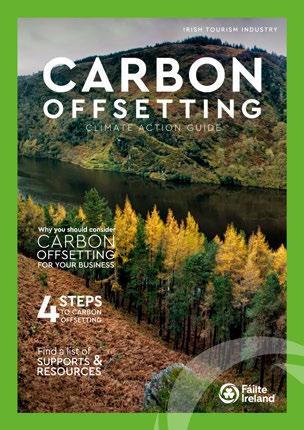
Read our advice for tourism businesses who wish to complement their reduction strategies by offsetting emissions.
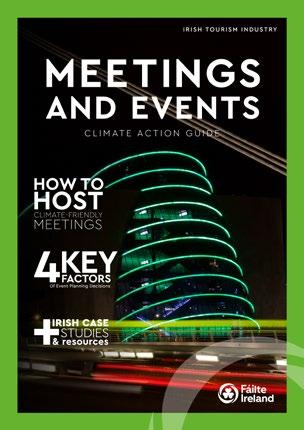

Find out how enhancing biodiversity in your business or location is a great place to start actioning climate change.
Learn how to run a climate-friendly meeting or event that incorporates environmental considerations.
Discover more about the importance of festivals for climate action from applying influence and inspiration to engaging with audiences.
